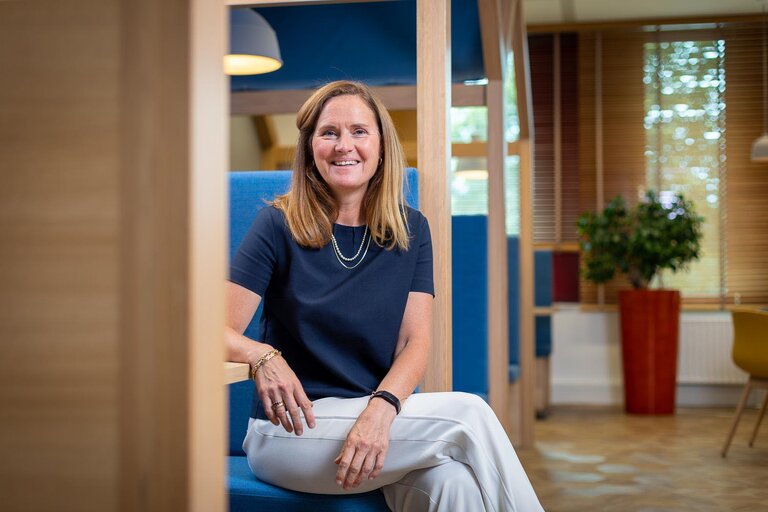
Chemical industry on the road to climate neutral and circular
Sustainability is the number one theme in the chemical industry, says Manon Bloemer, director of VNCI. 'Besides safety of course, safety is never finished and drives us every day. But the focus of our challenge is definitely on a sustainable future. Scaling up electrification, green hydrogen, reuse of CO2 and the use of new raw materials are the most urgent issues for me in this respect.
The chemical industry is undergoing an unprecedented transition. But this is not always very visible yet, and certainly not reflected in public opinion. Director of VNCI Manon Bloemer pleads for more pride within the sector. 'There is work to be done in terms of our image. Yes, we were part of the climate problem. But now we are part of the solution! We really need to start propagating that better.'
Solving climate problem
So how exactly does industry contribute to solving the climate problem? Bloemer: "What many people take for granted is the availability of good medicines, a cell phone, a laptop. All products that would not exist without the raw materials from the chemical industry. Moreover, many of the new technological solutions that are going to help fight the climate problem cannot exist without chemistry. What about synthetic, renewable fuels for cars and airplanes, batteries, wind turbine blades, solar panels? These come largely from our factories. So we will have to ensure that the chemical industry has a sustainable future, based on new raw materials and new energy sources.'
Update of the route
The road ahead is becoming increasingly clear. A few years ago, the VNCI examined how the sector could achieve 49% CO2 reduction by 2030. Various methods came up: for example, deployment of green hydrogen, electrification and CO2 capture and storage. 'Last year we thought it was time for an update,' continues Bloemer, 'and given the tightened climate targets the time was ripe. We made that update in the form of our report "From Roadmap to Reality." The report shows the road the sector is going to take to be climate neutral and circular by 2050.'
Recycling and bio-based raw materials
New elements in this are mainly recycling and the use of bio-based raw materials. Bloemer: 'For myself, it was an eye-opener that in recent years we have focused a lot on what I will call "what comes out of the chimney" and less on the products themselves. By this I mean that we certainly have something to gain in the reduction of CO2 emissions by reducing emissions from our factories. But we must additionally put much more effort into alternative carbon sources. This involves recycling used products, supplemented by new raw materials that we get from sustainable biomass. For example, circular packaging such as Coca-Cola bottles or Magnum's ice cream cups.'
Scaling up
In addition to the new elements in achieving climate-neutral and circular production, Bloemer believes we need to use existing and proven technologies above all - but on a much larger scale. 'Sustainably produced hydrogen, electrification and CO2 capture, storage and reuse are key technologies in this,' she says. 'With conversion of CO2 to a usable feedstock being the Holy Grail. In itself, the evidence that that is possible has been provided. But that's on a laboratory scale. My main concern now is scaling up and making it profitable. Green hydrogen - in the quantities we need - does not yet exist. Neither is large-scale storage of CO2; not to mention the reuse of CO2. A few big companies are working on electric crackers, for high-temperature heat, but it's not there yet. There are plenty of projects, but how do we get it from pilot through demo to commercial scale? That's where we need the government. For the right regulations and for subsidies to bridge the unprofitable phase.
A huge job
According to Bloemer, the 2050 goals are within reach, but there are also obstacles. Besides permit procedures that take a long time and government subsidy schemes that still do not always work properly, Bloemer cites the labor market as a serious bottleneck. 'How do we get the right people to carry out this major transition? Not only do we need engineers, we need a lot of mechanics, who can actually convert the factories. But the number of people choosing careers in engineering or chemistry is too low. So we will have to tell our story better. You can earn a very good salary in our sector and you are doing meaningful work. After all, you make sure that all kinds of everyday products will be produced much more sustainably. By the way, let me not forget that we also need contractors like Bilfinger very much. A good period is coming up for contractors; hardly any factory will remain the same. There will be new infrastructure, raw materials will change, the energy side and emissions will change. It's going to be a huge job.'
